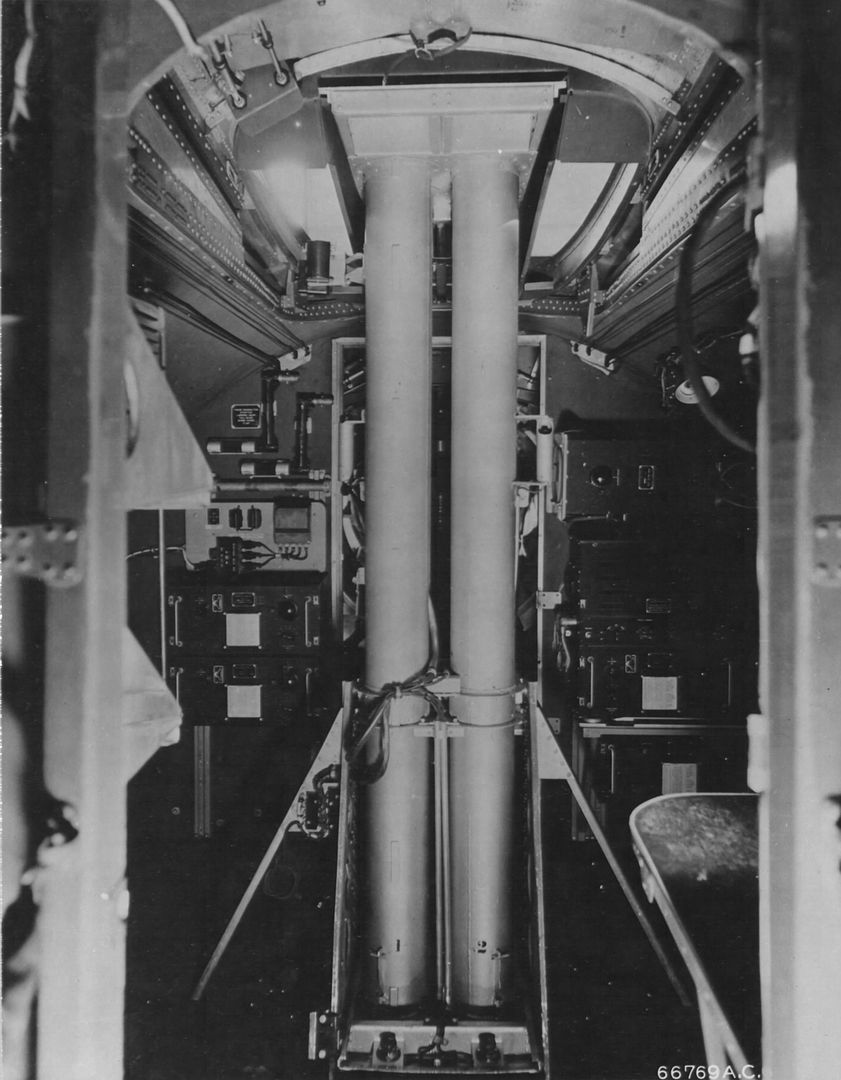Vertical rocket installation in a B-17 fortress 1943
Sun Nov 05, 2017 9:16 am
Re: Vertical rocket installation in a B-17 fortress 1943
Sat Nov 11, 2017 12:38 pm
I posted over on Key and this was the answer. 
As part of a scheme intended to attack enemy aircraft flying above B17 bomber formations, a trial was carried out in mid-1943 of a four tube upward firing rocket installation. The four launcher tubes were around 12 feet long and angle 4 degrees forward protruding through the mid-upper gun turret modified to remove the perspex and guns.
The trial aircraft was flown from Bovingdon to Pembrey and trial firing carried out successfully over Cardingan Bay. It is reported that the tubes could be reloaded in flight with the 3 inch rockets armed with a light HE warhead and time fuze.
The codename 'Sunflower' was used as a cover for the installation and 'Sunflower Seeds' for the rockets.
AND
Another scheme grew out of an Eighth Air Force request for an upward-firing rocket launcher to protect B-17 formations from planes bombing them from above. The development known by the code name SUNFLOWER SEED, was worked out in England, using a special British rocket, and a B-17 so equipped was flown to the United States for study.
At the same time technicians at Wright Field evolved a somewhat similar vertical-firing installation using the American M8 rocket; this was tested at both Aberdeen and Eglin Field during the spring of 1944.
The rockets behaved as the designers hoped, but the low velocity of the projectiles and the lack of flexibility in aiming them led to the conclusion that neither SUNFLOWER SEED nor its American variant would serve the intended purpose. By September 1944, with the cessation of overhead bombing attacks against Allied bomber formations, tactical need for such a weapon disappeared.
Results generally similar to those obtained with the vertical-firing rocket launchers followed when test data were assembled on a rearward-firing breech-loading 4.5 inch rocket launcher mounted in a B-17 bomber. Consequently, until scientists could develop rockets of higher velocity, even rockets with proximity fuses promised little for defensive air combat.
Source: US Army in WWII, The Ordnance Department, Planning Munitions for War, page 437.
You learn something new every day.

As part of a scheme intended to attack enemy aircraft flying above B17 bomber formations, a trial was carried out in mid-1943 of a four tube upward firing rocket installation. The four launcher tubes were around 12 feet long and angle 4 degrees forward protruding through the mid-upper gun turret modified to remove the perspex and guns.
The trial aircraft was flown from Bovingdon to Pembrey and trial firing carried out successfully over Cardingan Bay. It is reported that the tubes could be reloaded in flight with the 3 inch rockets armed with a light HE warhead and time fuze.
The codename 'Sunflower' was used as a cover for the installation and 'Sunflower Seeds' for the rockets.
AND
Another scheme grew out of an Eighth Air Force request for an upward-firing rocket launcher to protect B-17 formations from planes bombing them from above. The development known by the code name SUNFLOWER SEED, was worked out in England, using a special British rocket, and a B-17 so equipped was flown to the United States for study.
At the same time technicians at Wright Field evolved a somewhat similar vertical-firing installation using the American M8 rocket; this was tested at both Aberdeen and Eglin Field during the spring of 1944.
The rockets behaved as the designers hoped, but the low velocity of the projectiles and the lack of flexibility in aiming them led to the conclusion that neither SUNFLOWER SEED nor its American variant would serve the intended purpose. By September 1944, with the cessation of overhead bombing attacks against Allied bomber formations, tactical need for such a weapon disappeared.
Results generally similar to those obtained with the vertical-firing rocket launchers followed when test data were assembled on a rearward-firing breech-loading 4.5 inch rocket launcher mounted in a B-17 bomber. Consequently, until scientists could develop rockets of higher velocity, even rockets with proximity fuses promised little for defensive air combat.
Source: US Army in WWII, The Ordnance Department, Planning Munitions for War, page 437.
You learn something new every day.
Re: Vertical rocket installation in a B-17 fortress 1943
Sat Nov 11, 2017 5:35 pm
Thanks. Looks like those tubes are through the radio operators ventral hatch..

